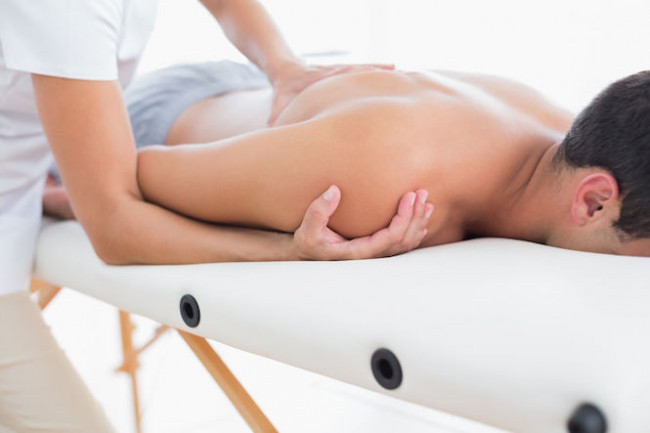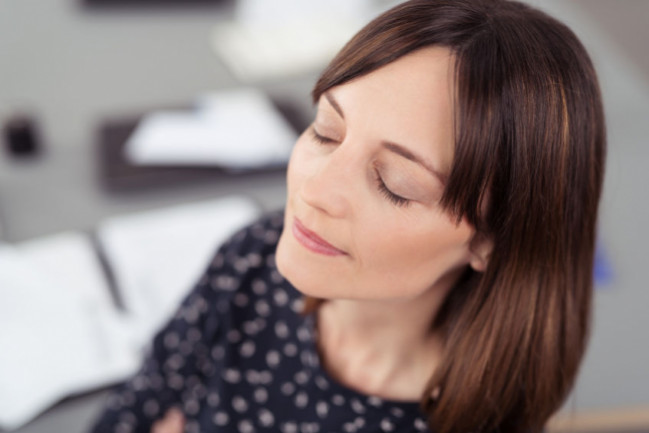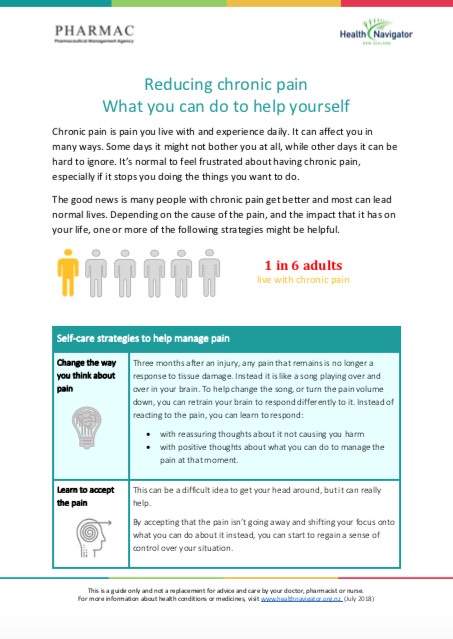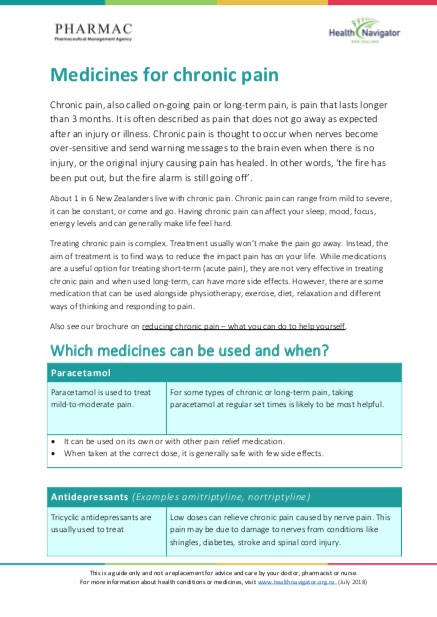There are a number of things you can do for yourself, or with support from your whānau and friends or usual health care provider, to help with your pain. They can improve your symptoms or help you to cope with them better. These are seen as types of self-care and include working on:
- your activity levels
- what and how you eat
- how you manage important things like stress, mood and sleep
- maintaining an active social life.
Making a pain plan for how you can improve these aspects of your life, and what to do when you have a bad day, can be helpful.
Be active
Be more active and do exercise. Exercise is for everyone and is very important for people living with pain. However, exercise can be difficult when you are in pain, especially if you have other long-term conditions or are overweight. You may have got into a 'no exercise' habit to try and avoid pain but the right type of exercise can actually help you to manage it better.
- Some people living with pain are afraid of doing exercise in case they make things worse.
- It can be difficult to know how to get started and what types of exercise are right for you. Your doctor, nurse or a physiotherapist can help you with this.
- Gentle stretching and walking are good things to try.
- Start slowly and pace yourself, then if all is going well you can gradually increase what you are doing and the length of time you do it for.
Eat well
Eat a wide range of foods, so that you can get all the energy, vitamins and minerals you need to be healthy.
Healthy eating is not about sticking to strict diets or depriving yourself of the foods you love. It’s about eating a balanced range of foods that help you feel great, have more energy, improve your outlook and help you achieve and maintain a healthy weight. If you are overweight, losing some weight can improve your pain symptoms. Read more about healthy eating.
Connect with others
When you’re in pain you may avoid going out and doing things you enjoy. Studies show staying connected with whānau and friends is important for your mental wellbeing.
Try joining a new group or start doing something that you used to enjoy. Catch up with people as much as possible. Talking, laughing and doing things with people you enjoy is the best medicine.
Distract yourself
Being engaged in activities, by yourself or with others, can provide distraction from thinking about your pain. It may be as simple as going for a walk and looking at your surroundings or listening to music.
Mindfulness
Mindfulness is the practice of being aware of each moment of your day as it happens. It can help to reduce stress, tension and anxiety. It can also help you to avoid focusing too much on your pain as well as directing your thoughts in a way that is helpful to managing your pain. Read more about mindfulness.
Get enough sleep
Many people skip on sleep but regular, good quality sleep is important for brain functioning, emotional wellbeing, physical health, daytime performance and personal safety. Not getting enough sleep is common and can have serious impacts on your health and wellbeing. It can also mean that you don’t cope as well with your pain.
Research suggests that adults need at least 7–8 hours of sleep each night to be well rested. To restore your sleep balance, you need at least 2 nights in a row of unrestricted good quality sleep.
If you have problems sleeping:
- try to get into a routine
- create a peaceful sleep environment
- avoid coffee, alcohol and exercise in the hours before you want to go to sleep
- avoid looking at a screen (eg, tv, phone or computer) in the hour or so before you want to sleep – reading or meditating is more relaxing for your brain.
Read more about sleep.
Learn about pain
There are some excellent books, apps, videos and online courses that people with pain have found helpful. Find more information on and resources for pain, including videos and apps.
As well as learning how to look after yourself better in order to manage your pain, there are also specific treatments you can be referred to specialist health professionals for. You may like to take the following points into consideration when you are talking to your doctor or another health professional about what is right for you.
| Questions to consider before starting a treatment |
- What is the cost of the treatment – is it affordable?
- Is this treatment suitable for your current health conditions, level of fitness?
- Is the treatment scientifically proven to be effective?
- How does the treatment work?
- How long will it take?
- What might the treatment achieve?
- Are there any potential side effects or potential injuries linked with the treatment?
- Is the treatment covered under the Accident and Compensation Corporation (ACC)? In New Zealand, ACC funds acupuncture, chiropractic manipulation and osteopathy for some conditions. Read more about ACC(external link)
- Is the therapist performing your treatment registered with a reputable professional organisation?
|
Once you have decided on a treatment, you may like to discuss with the therapist more about the benefits you may experience, possible timeframes and when a review will take place to discuss any progress. Remember that you don't have to continue treatment if you don't think it is helping you or if you don't feel comfortable with the therapist. You can stop at any time.











